Are you looking for a way to make sure your cat is getting all the nutrition they need? If so, oat grass could be the answer. Packed with vitamins A and C, minerals like magnesium, iron, and calcium, and essential amino acids, this nutrient-rich plant offers numerous health benefits for cats.
It boosts their immune system, aids digestion with fiber, and helps detoxify their bodies of harmful toxins.
Plus, its high fiber content can even help cats manage their weight.
Curious about how to get started on giving your cat oat grass? This blog post will provide all the information you need to know – from the many benefits of oat grass for cats to how to grow it in your own home.
Read on to learn more.
What Is Oat Grass?
This cereal grass is packed with essential vitamins, minerals, and fiber that can help reduce inflammation in your cat’s digestive system.
Plus, it’s easy to grow right at home. Oat grass is the perfect way to nourish your furry friend without any harsh chemicals or treatments.
Can Cats Eat Oat Grass?

Cats are known for their curious nature and love of grass.
So, can cats eat oat grass? The answer is a resounding yes. Oat grass is a cereal grass that’s packed with essential vitamins, minerals, and fiber – all of which can help reduce inflammation in your cat’s digestive system.
Plus, it’s easy to grow right at home.
Vitamins A, C, and E are all found in oat grass along with magnesium and potassium – all beneficial for cats.
And the high fiber content helps reduce hairballs.
Is Oat Grass Good For Cats?
Oat grass is an incredible way to keep your cat healthy and happy. Packed with essential vitamins, minerals, and fiber, this cereal grass helps reduce inflammation in your cat’s digestive system.
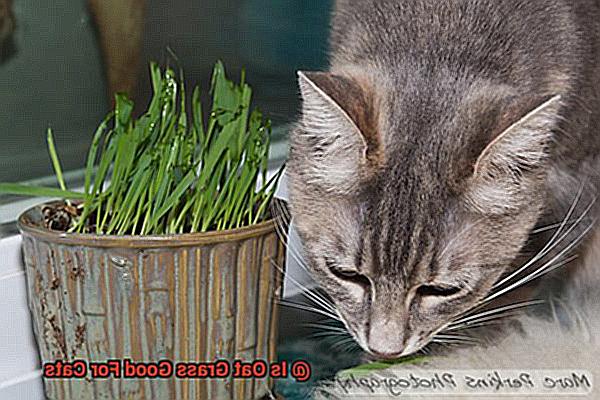
Plus, it’s easy to grow right at home.
Vitamins A, C, and E along with magnesium and potassium are all beneficial for cats – plus oat grass has a high fiber content that helps reduce hairballs.
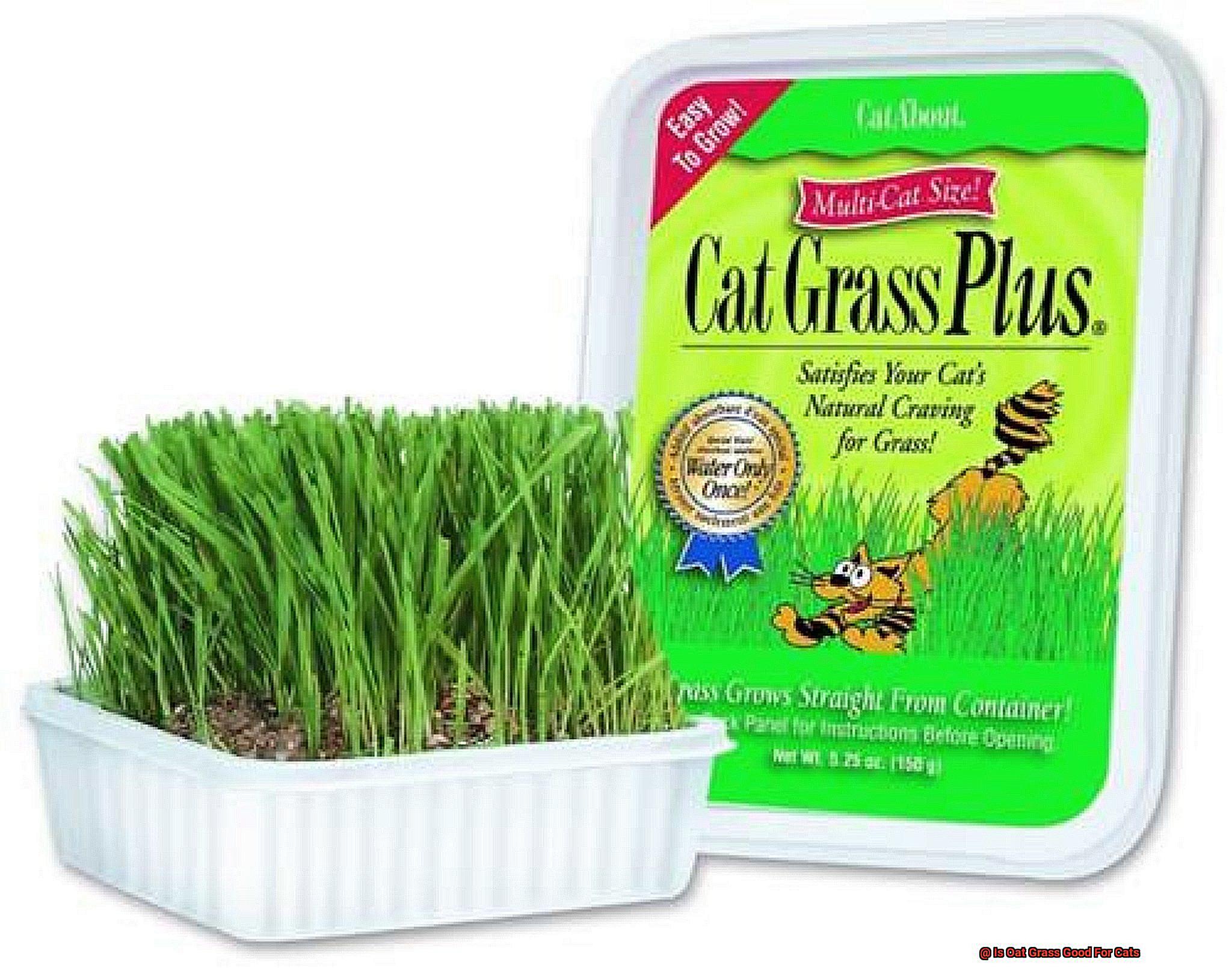
It’s also a great source of antioxidants which can protect against cancer and other diseases.
And because it’s free from toxins or pesticides, you don’t have to worry about any harsh chemicals or treatments.
Not only is oat grass good for cats’ physical health – it also provides mental stimulation as they will enjoy chewing on the leaves and playing with the stems.
Benefits Of Oat Grass For Cats
Oat grass is an excellent way to keep your cat healthy and happy. Packed with essential vitamins, minerals, and fiber, this cereal grass can benefit your feline friend in numerous ways.
It’s full of vitamins A, C, and E as well as magnesium and potassium – all beneficial for cats.

Plus, oat grass has a high fiber content that helps reduce hairballs.
It’s also loaded with antioxidants which can protect against cancer and other diseases.
And because it’s free from toxins or pesticides, you can be sure your cat is safe from any harsh chemicals or treatments.
Not only does oat grass provide physical health benefits – it also offers mental stimulation for cats who will enjoy munching on the leaves and playing with the stems.
So why not give your furry friend a nutritious treat by growing some oat grass today?
Oat grass can help improve your cat’s digestion by providing essential fiber and vitamins.
It helps keep cats hydrated since it contains lots of water.
Plus, it can reduce hairballs by aiding in the digestion of fur and other debris that cats may ingest while grooming.
Oat grass is also known to be beneficial for cats with sensitive stomachs – it can help to reduce vomiting and diarrhea.
It’s even known to strengthen the immune system of cats and improve their overall health.
How To Grow Oat Grass For Cats
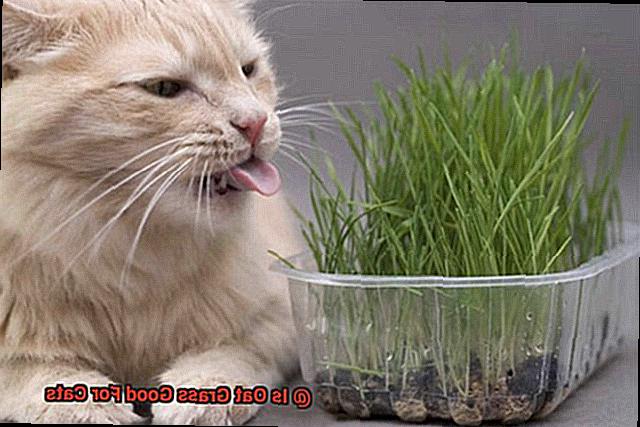
How Do I Plant Oat Grass?
Growing oat grass is easy. You can do it indoors or outdoors – just make sure the area gets at least 6 hours of sunlight per day.
To plant indoors, fill a shallow container with potting soil and spread the oat seeds evenly over the surface of the soil.
Water until moist but not soggy and cover with plastic wrap until sprouts appear.
Once they have sprouted, remove the plastic wrap and place in a sunny spot where it will receive at least 6 hours of sunlight per day.
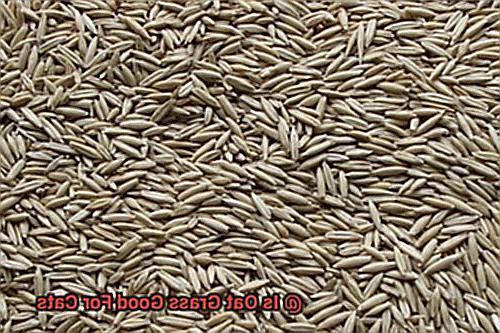
For outdoor planting, prepare an area with well-draining soil before spreading oat seeds evenly over the surface of the soil and watering until moist but not soggy before covering with plastic wrap until sprouts appear then removing it and watering regularly as needed.
How Do I Care For My Oat Grass?
Caring for your oat grass is easy. Make sure you water your plants regularly so they stay hydrated but don’t overwater them or let them dry out completely between waterings as this could cause them harm or even kill them off completely.
Additionally, provide your plants with plenty of sunshine by placing them near windows or outdoor areas where they will receive at least 6 hours of direct sunlight each day – this will help promote healthy growth.
Trim your plants occasionally so they don’t get too long or unruly looking – just make sure you leave enough foliage so your cat still has something to munch on. 5.
Is Cat Grass The Same As Oat grass?
The answer is a resounding no. While both types of grasses can provide your furry feline with some health benefits, they are not identical.
Oat grass is made from oats and contains essential vitamins and minerals that cats need to stay in top condition.
It has more nutritional value than cat grass and can help improve digestion, reduce hairballs, and even reduce stress levels in cats.
Tips To Keep Your Cat Safe When Eating Oat Grass
Are you looking for ways to keep your cat safe when eating oat grass? This healthy treat can be a great way to keep your pet entertained, but there are some important safety measures to consider.
Here are some tips for keeping your cat safe when eating oat grass.

First, ensure that the oat grass is free from pesticides and other chemicals that could be dangerous for your cat.
Additionally, make sure the area where you grow the oats is clean and free from contaminants.
Monitor your cat’s eating habits and make sure they don’t overeat or consume too much oat grass.
Provide plenty of fresh water for them to drink while they eat.
If you notice any signs of digestive upset, stop feeding the oat grass immediately and consult a veterinarian if necessary.
Consider growing your own oat grass at home in a safe environment – this will help ensure it is free from any contaminants or toxins.
Avoid giving your cat too much oat grass as it can lead to digestive issues and diarrhea in some cases.
Finally, be aware of potential allergies that your cat may have to certain types of plants, including oat grass; discontinue feeding if symptoms occur.
What Are The Alternatives To Oat Grass For Cats?
Cats love to snack on oat grass, but there are plenty of other healthy alternatives that cats can enjoy.
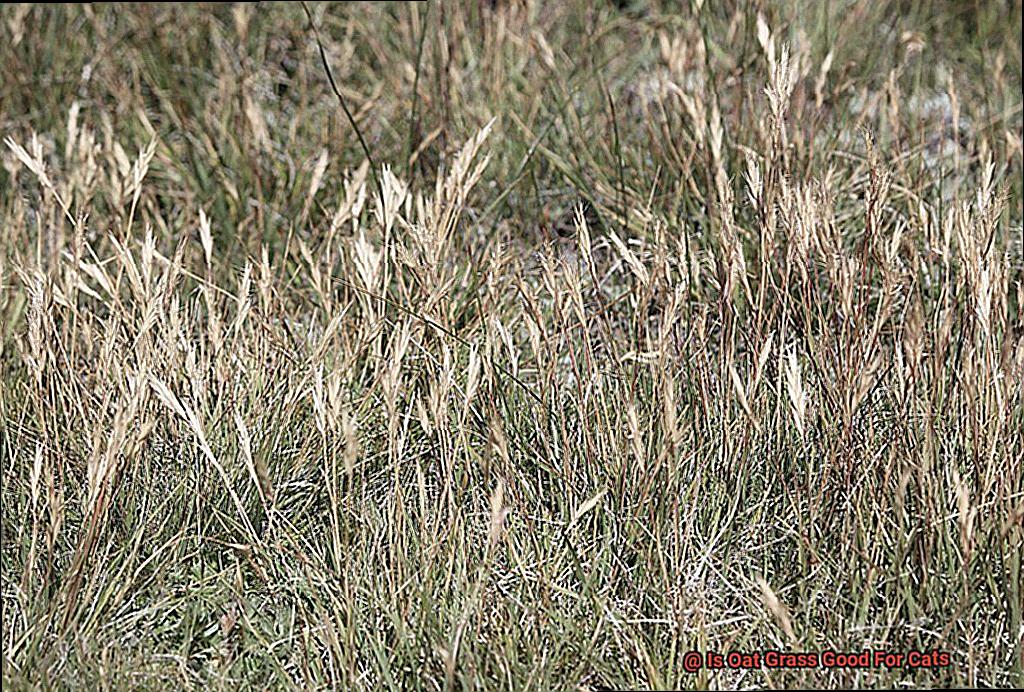
For instance, catnip is a great option – it has calming effects and helps cats sleep better.
Plus, wheatgrass is full of vitamins, minerals and antioxidants.
Barley grass also contains a wide range of vitamins and minerals that can support your cat’s health.
And don’t forget alfalfa sprouts – they offer cats fiber, protein, calcium and other essential vitamins and minerals.
Finally, parsley is a fragrant herb that cats may find interesting to eat.
It’s packed with iron, vitamin K, vitamin A and vitamin C – all essential nutrients for felines.
When selecting an alternative to oat grass for your cat, make sure it’s free from pesticides or any other harmful chemicals.
Monitor their eating habits too – make sure they don’t overeat or consume too much of the alternative grasses.
Conclusion
Oat grass is an excellent way to keep your cat healthy and happy. It contains essential vitamins, minerals, and fiber to reduce inflammation in the digestive system.
Plus, it’s full of vitamins A, C, and E as well as magnesium and potassium – all beneficial for cats.
And its high fiber content helps reduce hairballs.
Oat grass also provides mental stimulation for cats who will enjoy munching on the leaves and playing with the stems.
Best of all – it’s free from toxins or pesticides so you don’t have to worry about any harsh chemicals or treatments.
If oat grass isn’t an option for you, there are plenty of other healthy alternatives such as catnip, wheatgrass, barley grass, alfalfa sprouts and parsley.
However, always make sure these alternative grasses are free from pesticides or any other harmful chemicals before feeding them to your cat.
Monitor their eating habits too – ensure they don’t overeat or consume too much of the alternative grasses.
Provide plenty of fresh water while they eat as well.
For those looking to boost their cat’s health naturally without any harsh chemicals or treatments – oat grass is the perfect choice.







